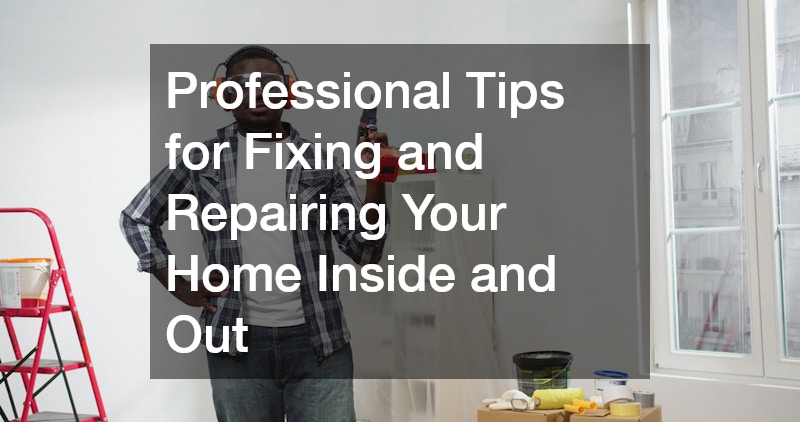In this comprehensive guide, we’ll explore expert advice on fixing and repairing various aspects of your home. Whether you’re addressing issues indoors or outdoors, these insights will help you tackle projects with confidence and precision. Home maintenance is not only about aesthetic appeal but also about ensuring the safety and durability of the structures. From minor repairs to major renovations, understanding how to properly tackle each issue can save time, money, and enhance your home life quality. By following the tips in this guide, you can approach repairs with a clearer plan and a better understanding of the tools, materials, and techniques required. We’ll highlight practical steps for addressing common problems, as well as preventative measures to avoid future issues. From repairing leaky faucets and patching drywall to restoring outdoor fixtures and maintaining structural integrity, each section is designed to give you actionable knowledge. Taking the time to address these tasks promptly not only extends the lifespan of your home’s features but also creates a safer, more comfortable environment for everyone who lives there.
1. How do I fix and repair leaky faucets?
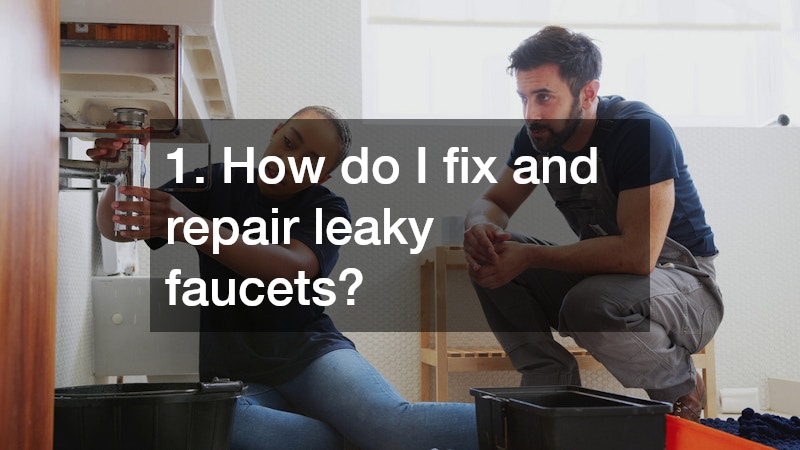
Leaky faucets can be a nuisance and can lead to significant water wastage over time. Before attempting to fix a leaky faucet, it’s important to identify the type of faucet, as this will determine the repair method. Generally, a dripping faucet is caused by a worn-out washer or O-ring, which are components that can be easily replaced.
First, ensure the water supply is turned off to prevent flooding your sink area. Once this is done, you can begin dismantling the faucet by removing the handle with a screwdriver. Carefully replace the worn washer or O-ring, which you can find at most hardware stores, following the same steps in reverse to reassemble the faucet.
Calling in professional plumbers can be a wise decision if you’re unsure about the process. However, for most homeowners, fixing and repairing a leaky faucet is straightforward and doesn’t require assistance from roofers. A little patience and a few basic tools can make all the difference in resolving the issue efficiently.
2. What are the best practices for fixing and repairing drywall?
Fixing and repairing drywall can appear daunting, but with the proper techniques, it is a manageable task. The first step is to assess the damage, which usually falls into one of two categories: minor dents or all-out holes. Once identified, you can decide on the appropriate repair method, whether that’s patching a hole or smoothing over small dents.
For minor dents, sand the area lightly, apply joint compound, and sand it again till smooth after drying. For larger holes, you’ll need a drywall patch, which can be adhered over the damaged area and coated with joint compound for a seamless finish. In both cases, ensure the surface is smooth before painting for a flawless look.
When working near windows, especially impact windows, take care to protect them from damage with drop cloths or similar protective materials. Hiring professionals is always a valid choice, especially when dealing with extensive drywall damage, but many DIY enthusiasts find satisfaction in personally tackling these common home repairs.
3. How can I repair a cracked foundation?
Cracks in the foundation of your home can pose serious structural issues if not addressed promptly. The complexity of fixing and repairing a foundation crack depends significantly on the severity of the crack. Small hairline cracks, often caused by settling, can be filled with epoxy or polyurethane injection.
For more significant cracks, it’s crucial to consult with a professional structural engineer or a reputable garage door company for an accurate assessment. Poor drainage and soil erosion are common causes of foundation issues, so addressing these environmental factors is also necessary. Regular inspections and maintenance can help homeowners identify potential problems before they escalate.
Repairing a foundation often includes reinforcing the existing structure, which may involve underpinning or other specialized techniques. While some foundational repairs can be a DIY project, they frequently require professional expertise due to the potential risks involved. Homeowners are advised to prioritize these repairs to maintain the integrity and safety of their homes.
4. Tips for fixing and repairing roof leaks?
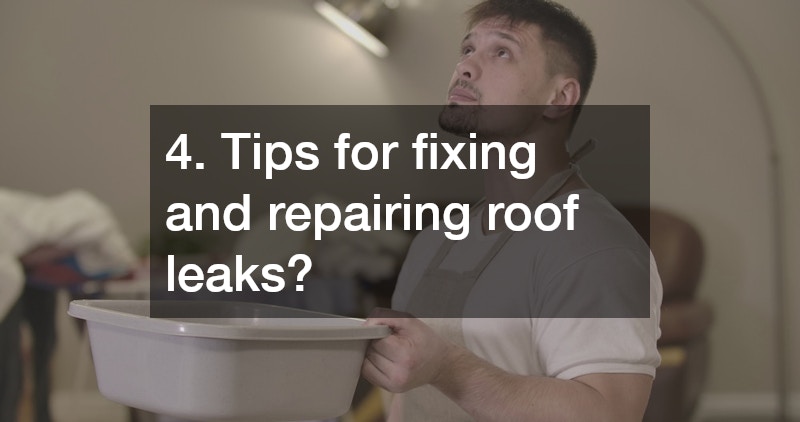
Roof leaks present a challenging problem that can lead to significant damage if not promptly addressed. Identifying the source of the leak is crucial to repairing it effectively. This often involves inspecting the roofing material, such as shingles, to check for damage or wear that allows water ingress.
Once the source is identified, fixing and repairing involve replacing damaged shingles or patching smaller leaks with roofing cement or sealant. It’s important to inspect the entire roof, not just the immediate area of the leak, as water can travel along beams and manifest away from the point of entry. Routine inspections, especially after severe weather, can prevent leaks by highlighting potential problems early.
Working with a competent landscaping company can also aid in proper drainage around your home, reducing the likelihood of water pooling on the roof. Professional roofers are often recommended, especially for significant leaks, as they possess the necessary skills and equipment to conduct repairs safely and efficiently, ensuring the longevity of your roof.
5. How to fix and repair broken tiles?
Broken tiles, whether on the floor or walls, can detract from the aesthetics of your home as well as create safety hazards. Fixing and repairing tiles require careful removal of the damaged tile without affecting the surrounding tiles. This usually involves chiseling out the broken tile piece by piece after removing the grout around it.
Once removed, clean the surface beneath and lay adhesive to secure a matching, new tile in place. Regrouting the tile joints finishes the repair, leaving your floor or wall looking pristine. It’s always recommended to keep spare tiles from the original installation to ensure a perfect match for any future replacements.
Consulting with pest control professionals can be beneficial if your tiles were damaged by underlying infestations, ensuring the problem does not recur. While tile repair can be accomplished by many DIY enthusiasts, hiring a professional tiler can ensure that the job is done correctly if you’re uncertain about the process or lack the necessary tools.
6. What should be done to repair a damaged deck?
Decks are a fantastic extension of living space but require consistent maintenance to remain safe and attractive. Fixing and repairing a damaged deck typically starts with assessing the extent of the damage. This may involve checking for rot, loose boards, or rusted screws that hold the structure together.
For minor issues, simply replacing individual boards or fixtures may be sufficient. However, significant structural problems might require replacing larger sections of the deck. Ensuring proper sealing and staining of the wood protects it from future weather damage and extends its lifespan.
If the damage involves structural integrity issues, consulting with AC repair services and other contractors can provide peace of mind through a professional evaluation. Safety should be the top priority when repairing a deck, and professionals have the expertise to identify hidden problems not immediately apparent to homeowners.
7. How to fix and repair faulty electrical outlets?
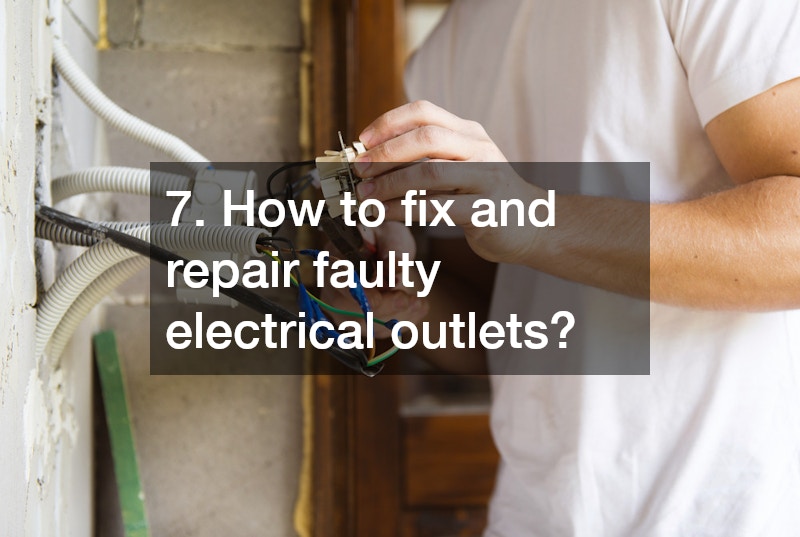
Faulty electrical outlets are not only inconvenient but can be a serious safety hazard if not addressed properly. Fixing and repairing outlets involves identifying the underlying issue, whether it’s frayed wiring, a tripped circuit, or a worn-out receptacle. Always ensure the circuit breaker for the outlet is turned off before starting any electrical repairs.
Common fixes include replacing the outlet with a new one or tightening loose connections that can cause the outlet to malfunction. It’s crucial to adhere to all safety protocols to prevent electrical shock or other hazards. Understanding the layout of your home’s wiring can be beneficial, reducing the time spent diagnosing the problem.
While many homeowners may attempt basic electrical repairs, working with HVAC contractors or certified electricians ensures the repairs meet local electrical codes and standards. Professional help is especially recommended for complicated issues or if there are persistent problems with multiple outlets in your home.
8. How to repair and maintain malfunctioning gutters?
Gutters play a critical role in directing water away from your home’s foundation, preventing potential water damage. Maintaining, fixing and repairing them involves regular cleaning, checking for leaks or misalignments, and ensuring they are firmly attached to the house. Blocked gutters can cause water overflow, leading to damaged exteriors and interiors.
To fix a misaligned gutter, adjust or replace the brackets holding it in place. Seal any leaks with a durable waterproof sealant to prevent further water seepage. Conducting regular inspections and cleaning the gutters, ideally twice a year, prevents the accumulation of debris that could block water flow.
If you’re undertaking bathroom remodeling service or any large-scale renovation, ensure the work does not compromise gutter alignment or functionality. For those uneasy about working at heights or dealing with complex gutter systems, professional gutter maintenance services can keep your system in optimal condition, protecting your home from water damage.
9. Tips for fixing and repairing hardwood floors?
Hardwood floors add elegance to any home, yet they require proper care to maintain their appearance. Fixing and repairing them ranges from addressing scratches to replacing entire boards. Minor scratches can often be hidden by applying a matching wood stain or sealant, while deeper ones might require sanding the affected area.
For more significant issues, such as water damage or large gouges, replacing the affected boards is necessary. It’s important to match the new boards as closely as possible in terms of wood type and grain pattern. Sanding and refinishing might be required to blend these repair areas seamlessly with the rest of the floor.
Advice from seasoned electricians is valuable when repairing hardwood floors in areas where electrical wiring might be present, ensuring no safety hazards arise from the repairs. Many homeowners choose to hire professional flooring experts when significant repairs are needed, as they possess the skills and tools to achieve excellent results efficiently.
10. How do I fix and repair a malfunctioning HVAC system?
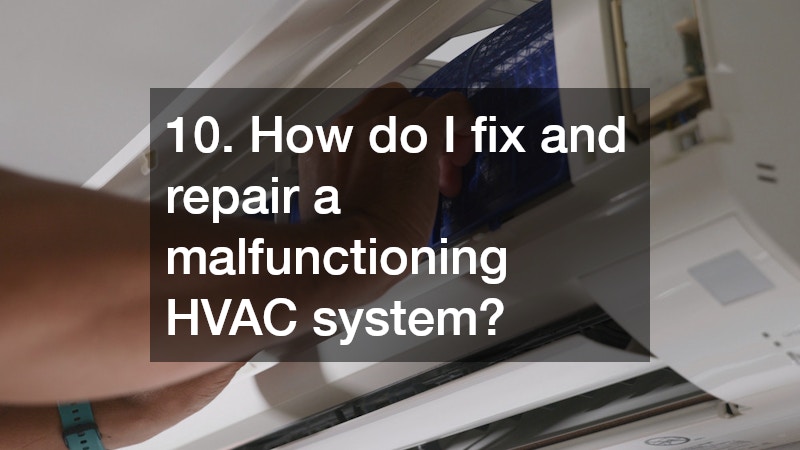
HVAC systems are essential for maintaining a comfortable indoor climate, especially during extreme weather conditions. Fixing and repairing these systems begins with identifying common issues, such as filter clogs, thermostat malfunctions, or refrigerant leaks. Regular maintenance, including replacing filters and cleaning air ducts, can prevent many common issues.
When more serious problems arise, such as a complete system failure or significant leaks, it is advisable to consult with professional HVAC contractors. These experts can perform comprehensive diagnostics and repair work, ensuring the system runs efficiently and safely. Maintaining a service contract with an HVAC professional can provide peace of mind and prioritize system longevity.
For homes with patios, consider hiring a patio contractor to ensure that outdoor HVAC components are not obstructed or improperly exposed to the elements. Routine check-ups and timely repairs extend the life of your HVAC system and prevent costly replacements, safeguarding your comfort year-round.
Fixing and Repairing Your Home Completely
In summary, fixing and repairing various components of your home can be a manageable task with the right knowledge and tools. By following these professional tips and guidelines, you can ensure that your home remains safe, functional, and aesthetically pleasing. Each project, whether it’s a minor repair like a leaky faucet or a major one like foundation repair, requires a careful approach and understanding of the task at hand.
While many homeowners enjoy the challenge and satisfaction of DIY home repairs, consulting with professionals such as roofers, HVAC contractors, and other specialists is often the best course of action for complicated issues. Regular maintenance and timely repairs are key to prolonging the life of your home’s components, ultimately saving time and money in the long run. Effective home repair strategies also enhance safety and well-being, making your home a more enjoyable place to live.
Embarking on fixing and repairing endeavors not only preserves your home but also increases its value and boosts your confidence as a homeowner. Whether improving curb appeal with a landscaping company, safeguarding your exteriors via impact window installations, or ensuring indoor comfort through AC repair services, these actions foster a holistic approach to home care. Adopting a proactive attitude towards repairs and regular upkeep paves the way for a durable, comfortable, and appealing home environment for years to come.
